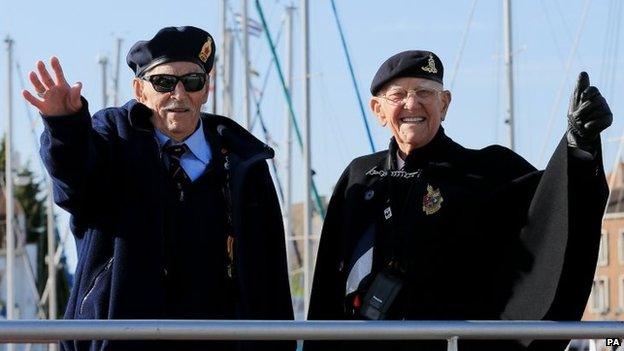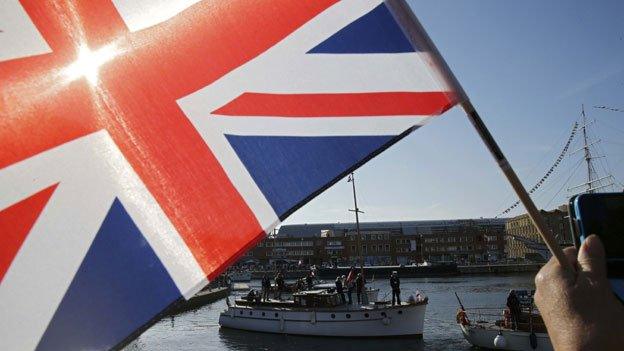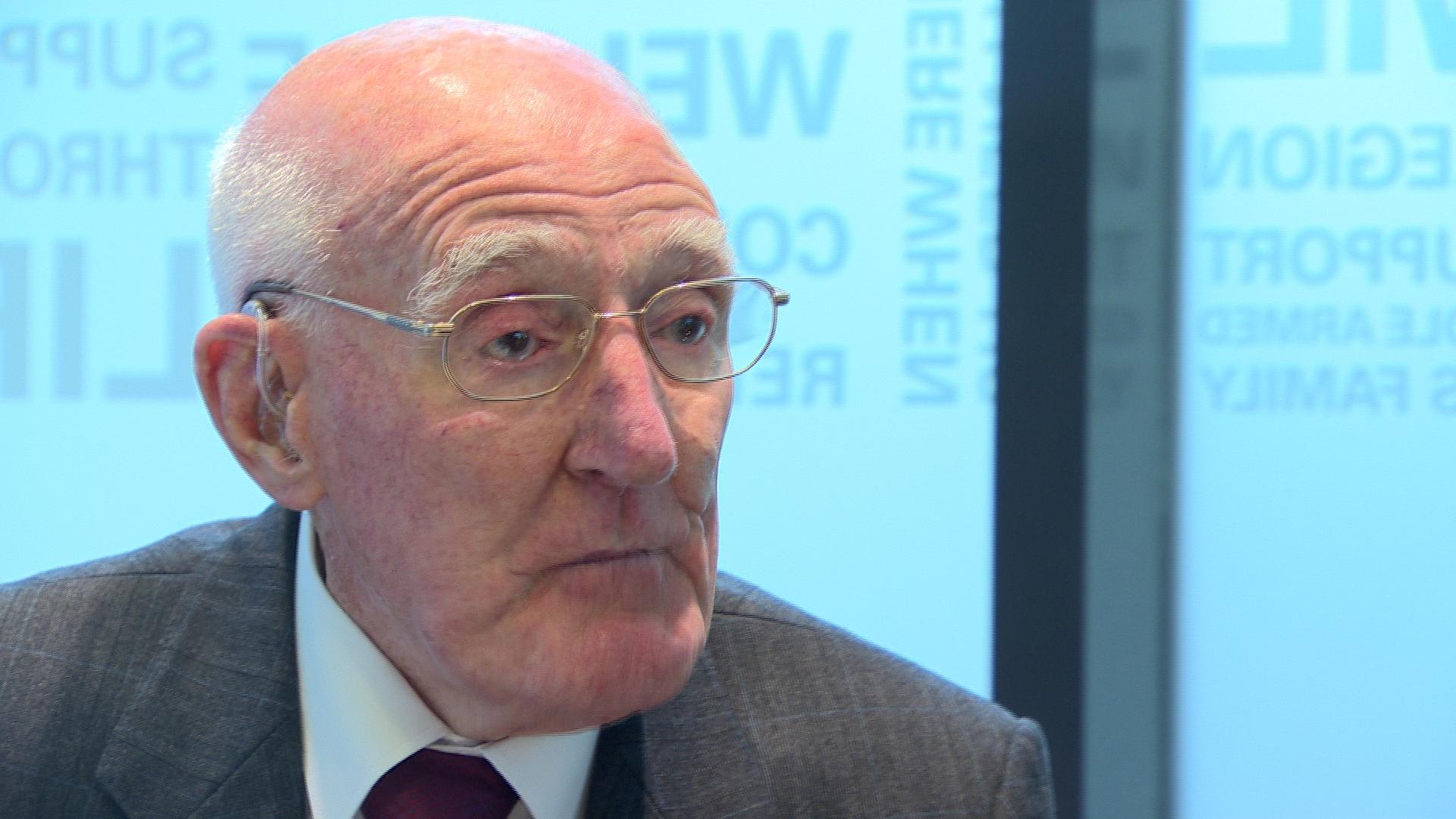Dunkirk veterans to remember fallen comrades
- Published

The "little ships" arrived in Dunkirk harbour on Thursday
Veterans involved in the Dunkirk rescue mission during World War Two are to gather to remember their comrades.
They will visit the British Memorial at Dunkirk Military Cemetery later, 75 years after the evacuation.
A series of events is planned at the French town this weekend to commemorate the rescue of Allied troops.
On Thursday, about 50 "little ships" involved in the evacuation from Dunkirk's beaches sailed from Kent. Such a trip is staged every five years.
Operation Dynamo - between 26 May and 4 June 1940 - saw hundreds of boats of all types rescue 338,000 troops from France after they had retreated from Nazi forces.
'Lucky but sad'
This year's main commemorative event will be on Saturday, when an official service will take place at the Allied Beach Memorial in Dunkirk.
On Sunday a memorial plaque will be unveiled at the site of the MV Crested Eagle, a paddle steamer which was sunk with 300 soldiers on board.
There will also be a commemorative service for the Association of Dunkirk Little Ships (ADLS) on the quayside in Dunkirk.
The ADLS has organised sailings across the English Channel since 1970 in honour of the fishing boats, pleasure yachts and lifeboats that took part.

Among those sailing with ADLS to Dunkirk were veterans Michael Bentall (L) and Garth Wright
Historians say if the evacuation had not been a success, the Allied war effort may have been critically damaged.
Among those sailing with the ADLS was Michael Bentall, 94, a father of six from Ontario in Canada.
In 1940 he was a soldier in the 4th Battalion, Royal Berkshire Regiment, and marched almost 120 miles to the beaches near Dunkirk to escape the German advance.
Eventually he found a rowing boat and was picked up by a navy ship during the rescue mission.
He said: "I feel very lucky that I managed to get away in one sense, but I am also sad that I lost so many friends, pals and comrades.
"I don't understand how I have lived so long."
Tanks aflame
Also taking part in the commemorations is Garth Wright, 95, from Plymouth, who was 20 when World War II broke out.
He was sent to northern France to guard Spitfire and Hurricane planes at an aerodrome in Lille.
But the RAF pulled their aircraft out after the Germans invaded, and his regiment was ordered to Dunkirk.
"The town itself, a day like today, would be like night because the old tanks here were all aflame and there was dense thick black smoke," he said.
"It was a hopeless situation. I went down to the beach and dug myself a little slit trench with my tin hat. It was sheer hell on Earth."
Aside from Operation Dynamo, two other troop evacuations from France were carried out.
Operation Cycle evacuated Allied troops from Le Havre from 10 to 13 June 1940.
And Operation Ariel was carried out between 15 and 25 June, transporting many thousands of troops to Britain from locations which included Cherbourg, St Malo, Brest, St Nazaire and La Pallice.
Between Operation Cycle and Ariel, some 191,870 troops were rescued.

The evacuation from Dunkirk

On 20 May 1940, Nazi German troops reached the English Channel at Abbeville in northern France cutting off the British army
Around 340,000 men, including 121,000 French and Belgian soldiers, retreated to the beaches of Dunkirk
Between 26 May and 4 June a ragtag British fleet, ranging from battleships to pleasure boats, braved the sea to rescue the stranded soldiers
The incredible courage shown by British civilians became known as the "Dunkirk spirit"
- Published21 May 2015

- Published21 May 2015
